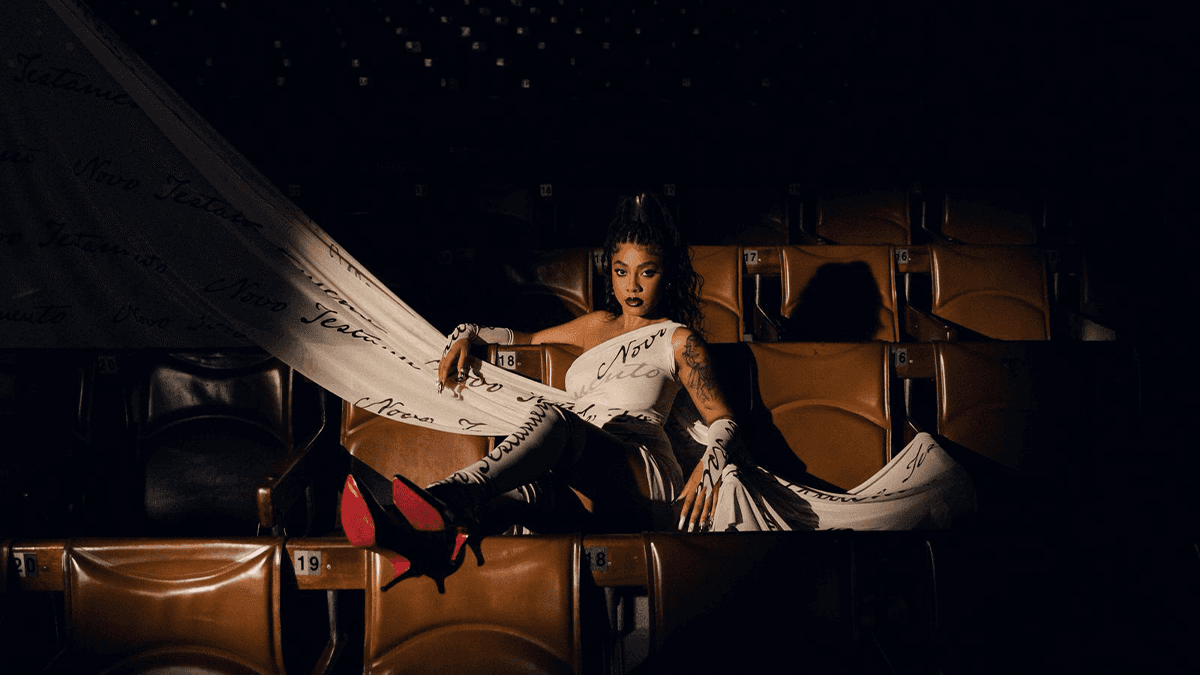RAF SIMONS: God bless America
The runway was ready for a grand banquet with fruits, wine, and plenty of food. Despite everyone feeling the festive vibe, the tone was darker and more macabre than celebratory. As if something sad and beautiful were about to happen.
In his last show, Raf Simons draws inspiration from the 80s cinema icon, Christiane F. But this is not the first time the designer has referenced the character in his work. Back in 2001, he also referenced her in his Autumn collection. Based on the book "I, Christiane F - 13 years old, addicted and prostituted," the publication tells the true story of a young German girl in the vibrant Berlin of the late 70s, at the peak of heroin and electronic music consumption in the country. Featuring David Bowie, the controversial film became a classic for depicting the everyday life of European youth during that period quite realistically. However, in 2001 Raf brought forth the intensity and authenticity of that moment to now expose the excess and glamorization.
And would there be a better time for this than now? A few months after the President of the United States, Donald Trump, declared an opioid epidemic a national emergency. In other words: the consumption of heroin and opioid-based medicines—almost four decades later—is a serious public health problem. To highlight this in a more political manner, Raf revisits his own aesthetics and history to present a new perspective.
Isn't it outdated to talk about drug consumption in 2018? Raf is more assertive than ever in having Christiane F as a reference since overdose and chemical dependency have become just as current a theme as before. At a time when artists under 21 are dying from excessive drug use and exposing all this on their social media.
It's obvious that Raf's show doesn't solve the issue, but it creates a narrative that perhaps Americans don't want to see, nor do young people around the world. Some say that Hip Hop has its role in this current story and contributes to the glamorization of drugs. Clearly a prejudiced viewpoint, given that the epidemic occurs in predominantly white residential neighborhoods. Yet, the designer brings something much deeper that is foundational to the "American way of life." It's the moment when American anesthesia to hide problems is injected, and consumerism returns to the agenda. Due to his appointment as creative director of Calvin Klein, Raf moved to the USA. They say this gave him a sharper commercial eye. Above all, he continues to critique consumption through a show that features looks with a more popular language. It's confusing, but he critiques consumption while being even more commercial. Genius stuff, ladies and gentlemen.
The sweatshirts with 'Drugs' emblazoned on the chest—which will surely be a sales hit—are a reference to the eponymous piece written by Cookie Mueller and Glenn O'Brien, who were part of Andy Warhol's crew in the golden days of the Factory. Where being free, creative, and transgressive meant experiencing and excessively consuming drugs. Another example of glamorization, but since it is a historical segment that is predominantly white, it is well accepted.
Raf uses vibrant colors and earthy tones to make the subject more appealing and less dark, after all, the American commercial perspective is to sell, right? The styling of the show is so good it brings tears. The turtlenecks from a distance look like scarves. Then it seems to be a single piece, and finally, we discover that he uses the volume of the tops and the draping to create this impression. A MASTERCLASS IN S-T-Y-L-I-N-G.
The show, despite the spectacle, is more about building an image. It's about the packaging, much more about the cover of the book than its content. After all, no one wants to delve deeper; everyone wants to anesthetize themselves and use freedom as a disguise.
Here, we can only express our wishes that Raf blesses America.
See others like this





